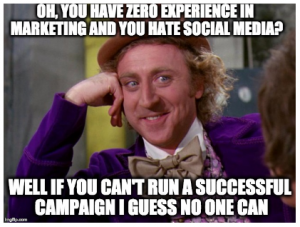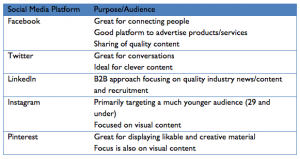Ok, so I’ll be the first to admit words and phrases like ‘content’ and ‘content marketing’ are becoming overused. Every one claims to be doing it, but very few people really understand what all that fancy lingo means and, more importantly, how to use it properly to get the desired results.
I’m here to run you through some of the more common terms, from buyer personas to visual content.
Buyer Personas
Buyer personas are fictitious characters that represent an accurate snap shot of your target audience. Knowing your audience, and understanding their needs is key to the success of any content marketing campaign. Take the time to identify whom you are targeting and develop your content ideas from there.
Calls-to-Action
Remember this term, as this is a vital addition to your content marketing. This little button (or link, or whatever you choose to use) is the key to converting site traffic into leads. It’s generally displayed in the form of a “download now” or “click here” action button, but this little beauty doesn’t always need to be focused on lead generation. It can also be a link to social media, or an external link or an email. Whatever you choose, just make sure it’s relevant to the content piece.
E-books
What’s an e-book I hear you ask? Well, the best way to describe an e-book is an extended piece of content that explains a topic in more depth. The blog posts you write should be short snippets about different aspects of one topic. Think of your blog posts as individual chapters in a novel, and the e-book is the novel. It’s combining everything into one detailed piece of content that educates and inspires the reader.
Editorial Calendar
Every content strategy should be accompanied by en editorial calendar. This is your planner and the road map for all content creation. It will help you develop your ‘story’ and put together the topics you wish to cover – and of course which buyer personas the content is targeting.
Keywords
Basically a keyword is something a user types into a search engine to find information about a particular topic. Content marketers should understand which keywords their target audience favours, and front-load them across the content they produce. All this should also tie in with your SEO campaign to get the most bang for your buck.
Newsjacking
This is a tricky one that not many people really understand. Simply put, Newsjacking is a practice of making the most out of recent and highly popular news. I don’t’ mean report on the fact that Kim Kardashian broke the Internet with her nude photoshoot. No – that’s going to be covered a lot anyway, and really… who cares! I’m talking about putting your own spin on it. So, for example if you are a social media agency, talk about how this impacted Instagram or what that means for brands.
Remember that all your content should be useful to YOUR target audience. Oh and if you are quick enough to capitalise on popular news, Google will reward you and bump the ranking of your story.
Visual Content
With so many words and our limited attention span, visual content is fast becoming the cool kid on the block. Here, I’m referring to images, infographics and videos, which are crucial to capturing the attention of the time poor consumer, and really get them to engage with your brand.
I hope this was helpful and gave you a deeper insight into the powerful world of content marketing.
If you have more questions or need some compelling words, get in touch with us at [email protected].




